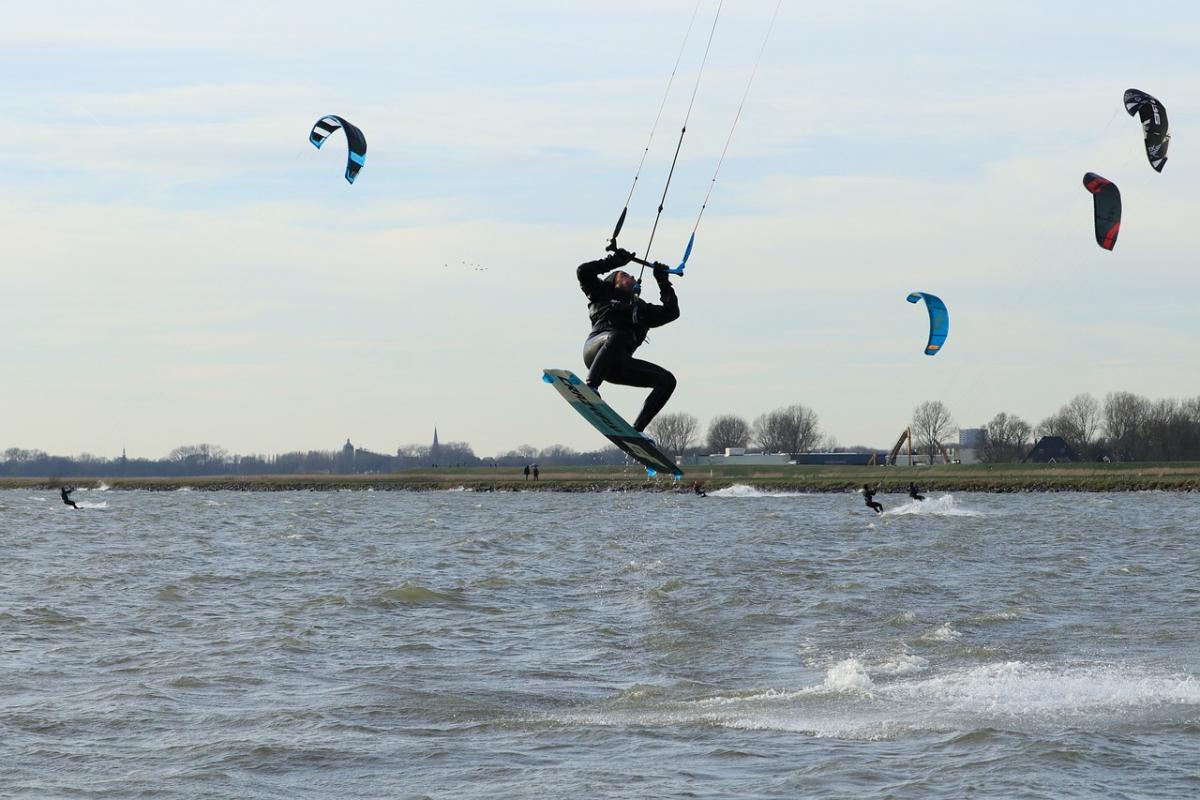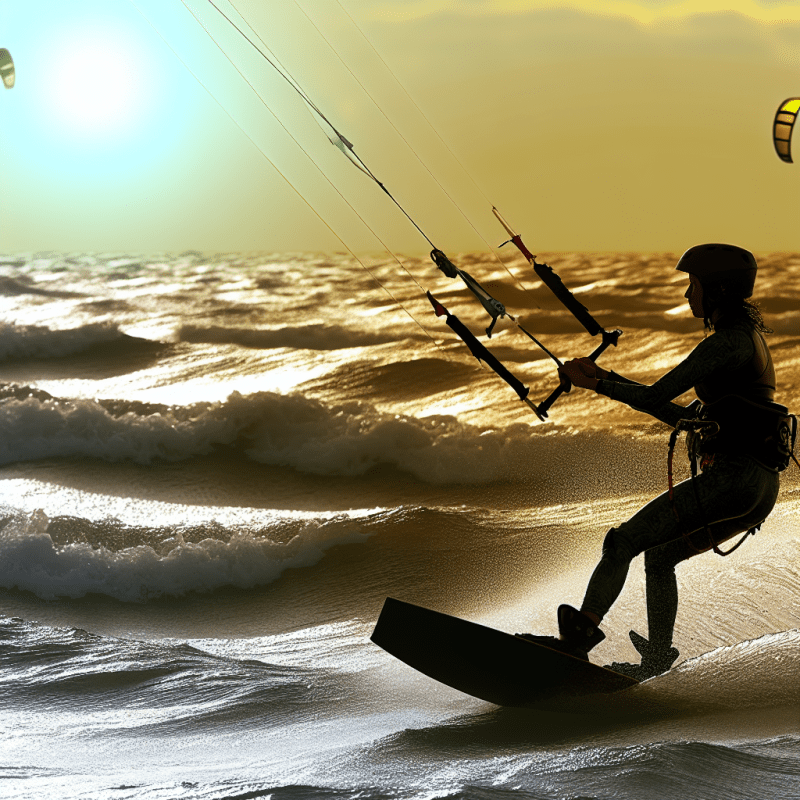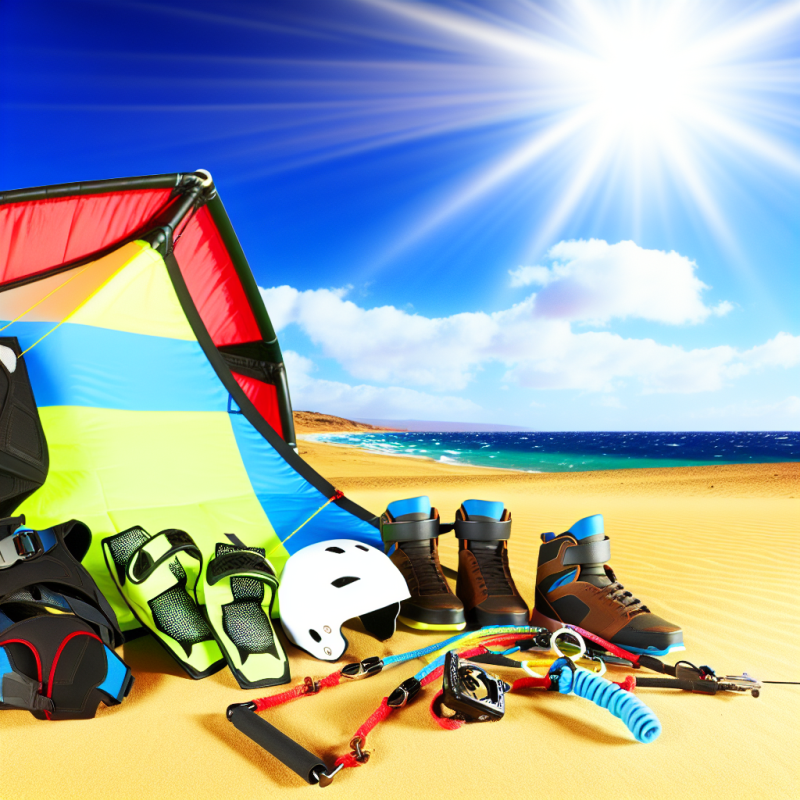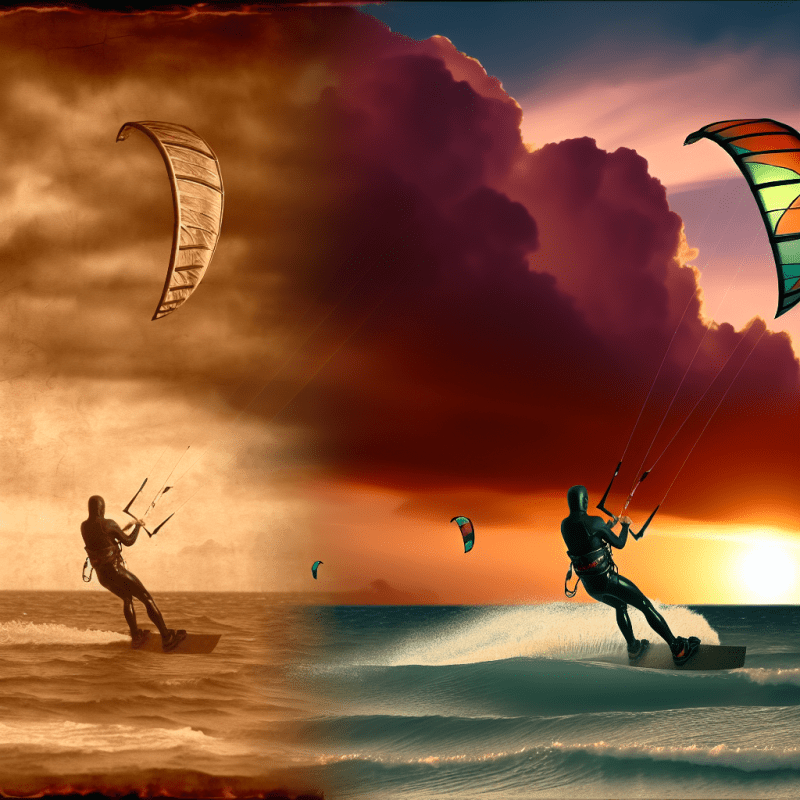Kitesurfing is an exciting, action-packed water sport that combines elements from both surfing and kite.
It is an extreme activity played on the surface of a body of water, with the kitesurfer using a large kite to propel themselves using the power of the wind.
Kitesurfing is an attractive and physically demanding sport that requires participants to think ahead and be aware at all times of their surroundings in order to ensure a safe and enjoyable experience.
Before attempting Kitesurfing it is important to ensure that the participant has the right equipment and knowledge to make the experience enjoyable and avoid any accidents.
This guide is designed to provide information and tips to those who are interested in trying Kitesurfing for the first time, so that they can learn the basics and start having fun!
Important Safety Considerations
Kitesurfing is an exciting and enjoyable activity but it is also very dangerous if done incorrectly. Before going out kitesurfing, make sure you are informed of the safety considerations and have the right equipment.
Learn the Basics
The most important safety consideration is gaining the right knowledge and learning the basics of kitesurfing. Make sure to attend a qualified kitesurfing school to learn the fundamentals before practicing on your own. Keep up to date on local kiting regulations and safety rules, you may even be required to take an official course to kitesurf in certain areas.
Weather Conditions
Make sure to always check the weather and water safety report before going out for a kitesurfing session. Do not attempt kitesurfing in conditions which exceed your current level of experience and take into account wind, swell and current.
Proper Equipment and Clothing
Make sure all your equipment is properly checked and inspected before taking it out on the water. Wear a helmet and an impact to help keep you safe. Use only the recommended safety equipment and practice in appropriate areas only.
Know First Aid
Knowledge of basic first aid is essential and could save your life in an emergency. Make sure you are familiar with the most common injuries and know how to treat them effectively.
Kitesurfing Equipment
Kitesurfing is an exciting sport, but it does require special equipment to do it safely and effectively. Before you start kitesurfing, it is important to make sure you have the correct kitesurfing equipment.
Kite
The first piece of kitesurfing gear is the kite. This is the most important part of the equipment, as it generates the power that you need to stay afloat and move through the water. Kites come in a variety of sizes and styles, so it is important to choose the kite that is right for you. It is important to have the right size kite, as an ill-fitting kite can be both dangerous and inefficient.
Board
The next essential piece of kitesurfing gear is the board. This can come in a variety of shapes and sizes, so it is important to choose one that is suitable for your size and skill level. The board should also be able to handle the type of kitesurfing you will be doing, be it surfing on the waves, cruising on flat water, or doing tricks and jumps.
Harness and Leash
The next important item of kitesurfing gear is a harness and a leash. The harness will provide you with the support to fly your kite, and the leash is attached to your board so you can stay connected to it. It is important to make sure the harness fits correctly and is comfortable before you take to the water. The leash should be long enough to allow you to move freely while kitesurfing.
Safety Gear
When you are kitesurfing, safety is of utmost importance. You should always make sure you have the appropriate safety gear with you when taking to the waves. This includes a helmet and impact vest. Wearing these items not only keeps you safe, but they can also improve your performance while you are out on the water.
By having the right kitesurfing equipment and wearing the necessary safety items, you can be sure that you are prepared for a safe and enjoyable kitesurfing experience.
Setting Up a Kitesurfing Rig
Setting up a kitesurfing rig can seem daunting, especially to the novice rider. Luckily, with the right equipment, a few basic steps, and patience, anyone can assemble a complete and suitable rig.
Equipment
The essential equipment necessary for kitesurfing includes a kite, harness, kite control bar, kite lines, and a board. Depending on wind strength, kites come in different sizes. For a first-time rider of average weight in good wind, a 9m size is ideal. Harnesses come in different sizes, shapes, and colors, so choose one that fits comfortably.
A kiteboard should be chosen based on rider preference and style, but for beginners, this is usually a big and easy-to-ride model.
Other Considerations
Always remember to check your gear before use. Make sure all lines are secured properly and free from tangles, tears, and frays. Additionally, never launch a kite with other people nearby, as it can be dangerous for both the rider and onlookers.
Launching and Landing the Kite
Launching your kite can be a daunting task, especially for beginners. Knowing the appropriate wind conditions for your kite size, amount of line and type of launch are all important factors to consider when heading out to the beach to ride. Proper launching and landing techniques are essential for an enjoyable and safe experience.
Body Drags, Self-Rescue, and Board Exercises
Once you have become more comfortable with your kite and can accurately control it, you should also learn more advanced skills. The best way to start is to practice your body dragging, self-rescue, and board exercises. Though it might sound intimidating, mastering these skills is essential for becoming an experienced kitesurfer.
What is Body Dragging?
Body dragging is the process of using your kite to drag yourself in the water without the board. It requires you to move the kite's power position, which helps you to become more familiar with the kite and the power it has. Body dragging can be used to get back to the beach if you lose your board, or to move in deeper water while searching for the best conditions. It’s also great for gaining confidence in kitesurfing in different conditions, so it’s a skill that is highly beneficial to learn.
Self-Rescue
You should also become familiar with the self-rescue. Self-rescue is a combination of skills and is important for the safety of both you and those around you. It is important to understand and be able to do self-rescues in order to be a responsible and safe kitesurfer. Some of these skills include controlling the kite with one hand and using the board in your other hand to reach the beach.
Knowing these techniques can help you if you are ever in a situation where you are unable to ride your equipment normally.
Riding the Kite Board
In kitesurfing (or kiteboarding), the rider is controlling a very large kite, that is attached to the board by way of straps or a bar. The rider will then use the board to traverse the waves and chop the waves, creating a surfing effect. It is important to know how to set up the kite and board properly, in order to ensure safety and success in your ride.
Setting up the kite will start with selecting the right size of kite. Depending on your weight, the wind speed and direction, as well as the type of surf, you will need to select the appropriate size to maximize performance and safety. It is important to understand wind speed and direction as this affects the pull on the bar, and movement of the kite.
Next is getting the board ready. Making sure the board is the right size for your body weight will give you the strength and control you need for a successful ride. The size should be relative to your body proportions to increase maneuverability on the water.
Finally, it is important to understand how the kite will be flying and how it will respond to specific inputs. Taking a kiteboarding lesson is essential to learn the basics of kitesurfing, understand the wind speeds and directions, and how to use the ring control to manoeuvre the kite appropriately. This will allow the rider to control the kite and board, and control the speed and direction.
Once these three components are mastered, the rider is ready to jump into the water and start riding! All that is needed is some practice, dedication, and a few wipeouts here and there and you’ll be kitesurfing in no time. Have fun, and enjoy the ride!
Kitesurfing is one of the most exhilarating and unique water sports available. For those looking to try something new and exciting, kitesurfing is a great way to get started. Although it can take some practice to master the sport, with the right instructions and a good attitude the novice kitesurfer can land their first successful ride before they know it.
The key to succeeding in kitesurfing is learning how to safely monitor the wind conditions and mastering the proper kite flying techniques. Before taking on kitesurfing, it is important to get the right equipment, find an appropriate learning environment, and ask for help from an experienced kitesurfer.
Kitesurfing is a tremendously rewarding sport that can help provide an adrenaline boost, an opportunity for outdoor exercise, a chance to meet new people, and an incredible aquatic experience - all at the same time.



